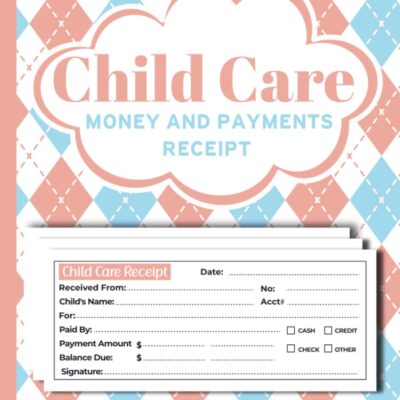
Stress-relief techniques can find inner peace even amid chaos. How? Through meditation, mindfulness, and yoga. These practices are excellent for helping you chill out and feel more balanced. Thus, how about we make a plunge and investigate a few viable tips and techniques to help you achieve that much-needed inner peace. Stress-relief techniques can make life hectic. Between work, family, and everything else, it’s no wonder we feel stressed out.
Understanding Stress and Its Impact
First things first, let’s talk about stress. Stress is your body’s way of responding to challenges. A little stress can be motivating, but too much? Not so great. It can mess with your mind and body, leading to headaches, muscle tension, high blood pressure, anxiety, and even depression.
So, what’s causing all this stress? Common culprits include work pressure, money, relationships, and health concerns. When pushed, your body goes into “survival” mode, delivering chemicals like cortisol and adrenaline. This is fine in short bursts, but chronic stress can seriously harm your health. That’s why it’s super important to manage stress effectively.
Meditation Techniques for Inner Peace
Stress-relief techniques meditation is all about focusing your mind to achieve deep relaxation and awareness. It’s been around for centuries and is fantastic for mental lucidity, profound equilibrium, and in general wellbeing. Here are some easy meditation techniques to get you started:
This one’s a classic. Find a quiet spot, sit comfortably, and close your eyes. Take a full breath through your nose, allowing your midsection to rise. Then, breathe out leisurely through your mouth. Center around the vibe of your breath. On the off chance that your mind starts to wander, carefully return it to your breath. Body Output Reflection: Rests and shut your eyes. Begin
Rests and shut your eyes. Begin by focusing on your toes, then gradually move up your body, paying attention to each part. Notice any tension or discomfort and imagine releasing it. This helps increase body awareness and relaxation.
Close your eyes and envision yourself in a serene spot like an ocean side or a woodland. Visualize all the details – the sights, sounds, and smells. Let yourself fully immerse in this serene environment and let go of any stress.
To benefit from meditation, try to make it a daily habit. Start with just a few minutes each day and gradually increase the time. Find a routine that works for you and stick with it.
Mindfulness Practices for Everyday Life
Mindfulness is all about being present in the moment without judgment. It helps you focus on the here and now instead of worrying about the past or future. Here are a straightforward ways of rehearsing care in your daily life:
Pause for a minute to zero in on your breath over the course of the day. Breathe in profoundly through your nose, hold for a couple of moments, and breathe out leisurely through your mouth. This can help you with remaining grounded and quiet.
Before eating, take a moment to appreciate your food’s appearance, smell, and texture. Eat gradually and enjoy each nibble, seeing the flavors an sensations. This not only enhances your eating experience but can also prevent overeating.
Whether you’re taking a walk outside or just moving around your home, pay attention to the sensations in your body. Notice the feeling of your feet touching the ground, your muscles’ movement, and your breath’s rhythm. Observe your surroundings and be fully present.
Consider routine activities like washing dishes, folding laundry, or brushing teeth. Center around the sensations and developments engaged with each task. This turns mundane activities into opportunities for mindfulness and stress relief.
Regular mindfulness can improve mental clarity, emotional balance, and overall well-being. It helps you respond to stressors calmly instead of impulsively reacting impulsively.
Yoga Techniques for Stress Relief
Yoga combines physical postures, breathing exercises, and meditation to promote well-being. It’s great for reducing stress because it relaxes the body and calms the mind. Here are some basic yoga models for fledglings:
Child’s Pose (Balasana):
- Stoop on the floor with your enormous toes contacting and knees spread separated spread apart.
- Sit out of sorts and stretch your arms forward, bringing your temple down to the ground.
- Inhale profoundly and loosen up here for a couple of moments.It’s
Super calming.
Begin your hands and knees, with your wrists under your shoulders and knees under your hips. Breathe in as you curve your back and lift your head and tailbone (Cow Posture). Breathe out as you round your spine and fold your jaw to your chest (Feline Posture). Rehash several times, syncing your breath with your movements.
Stand with your feet hip-width apart. Breathe in and raise your arms above. Breathe out and twist forward from your hips, coming to your hands toward the floor or your shins. Let your head and neck relax. Hold for several breaths, then slowly roll up to standing. This pose relieves stress and fatigue.
Lay on your back close to a wall. Carry your hips as near the wall as you can and swing your legs up against it. Close your eyes and put your arms by your sides. Take a few deep breaths and rest for a while. This pose makes you feel calmer and more pro deeply and relax for several minutes. This pose reduces anxiety and promotes relaxation.
Remember to combine yoga with mindful breathing for the best results. Focus on your breath as you move through each pose, allowing yourself to experience the present moment fully.
Creating a Personalized Practice
Stress-relief techniques combining meditation, mindfulness, and yoga can create a powerful stress-relief routine tailored to your needs. Here are some tips for creating a personalized practice:
Start Small: Begin with just a few minutes of daily meditation, mindfulness, or yoga. Gradually increase the duration as you become more comfortable with the practices.
Find Your Rhythm: Choose a time of day that works best for you, whether in the morning, during during lunch or before bed. To be consistent, critical to developing a successful practice.
Create a Peaceful Environment: Set up a quiet, comfortable space for your practice. Soft lighting, calming scents, and soothing music create a relaxing atmosphere.
Listen to Your Body: Adapt your practice to fit your individual needs and preferences.
If a particular technique doesn’t resonate with you, try another one.
Give yourself time and space to grow as a practitioner.
Seek Support: Consider joining a local or online group or class to connect with others who share your interests. Community support can provide motivation, encouragement, and guidance as you develop your practice.
Conclusion
Stress-relief techniques meditation, mindfulness, and yoga are fantastic tools for managing stress and finding inner peace. By incorporating these practices into your daily life, you can cultivate a sense of calm, clarity, and well-being. Remember, the journey toward inner peace is personal, so find techniques that resonate with you. Be patient, stay consistent, and embrace the process of self-discovery and growth.
If you want to learn my #1 OLLY Goodbye Stress Gummy, GABA, L-Theanine, Lemon Balm, Stress Relief Supplement, Click Here Now





